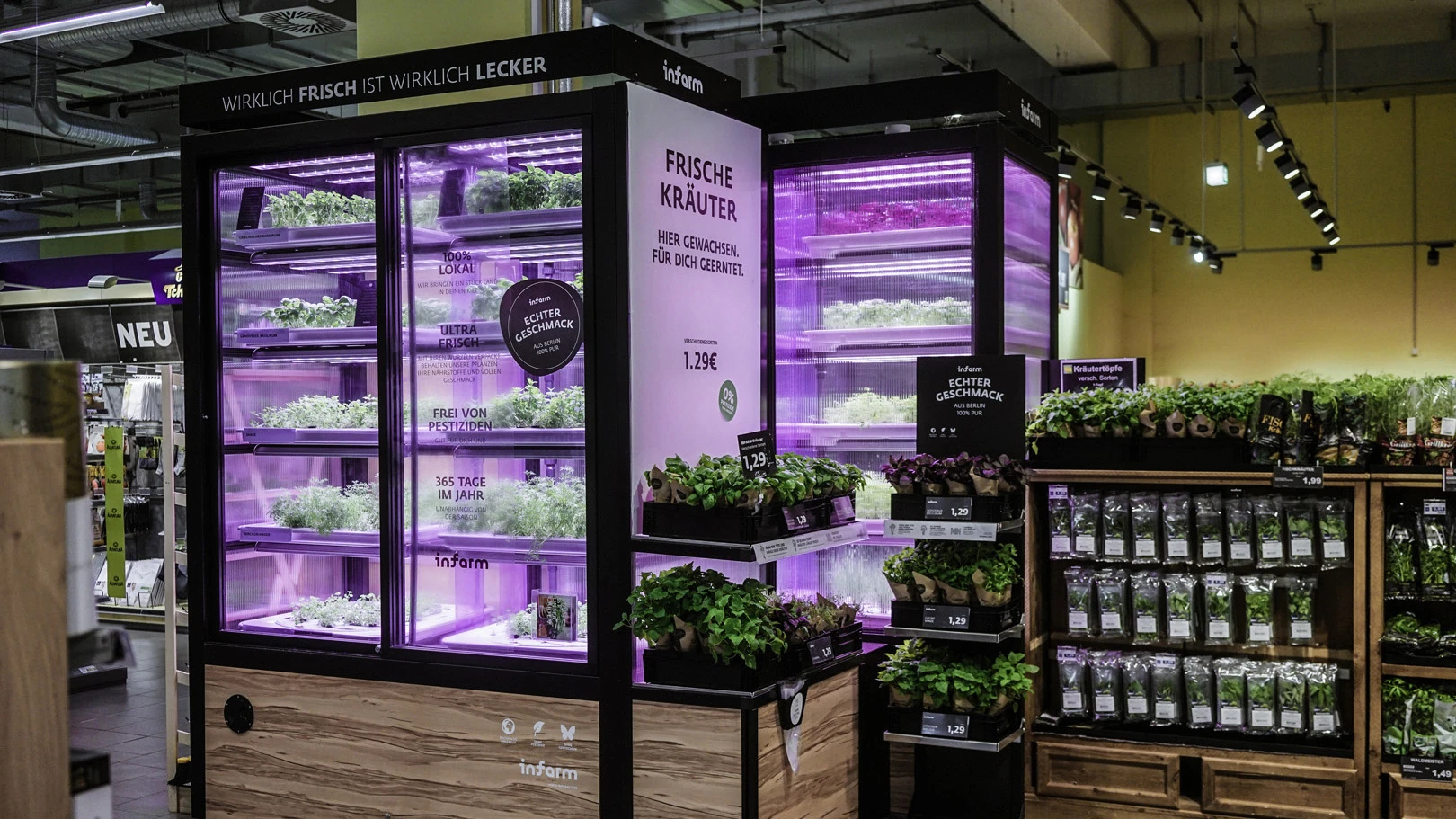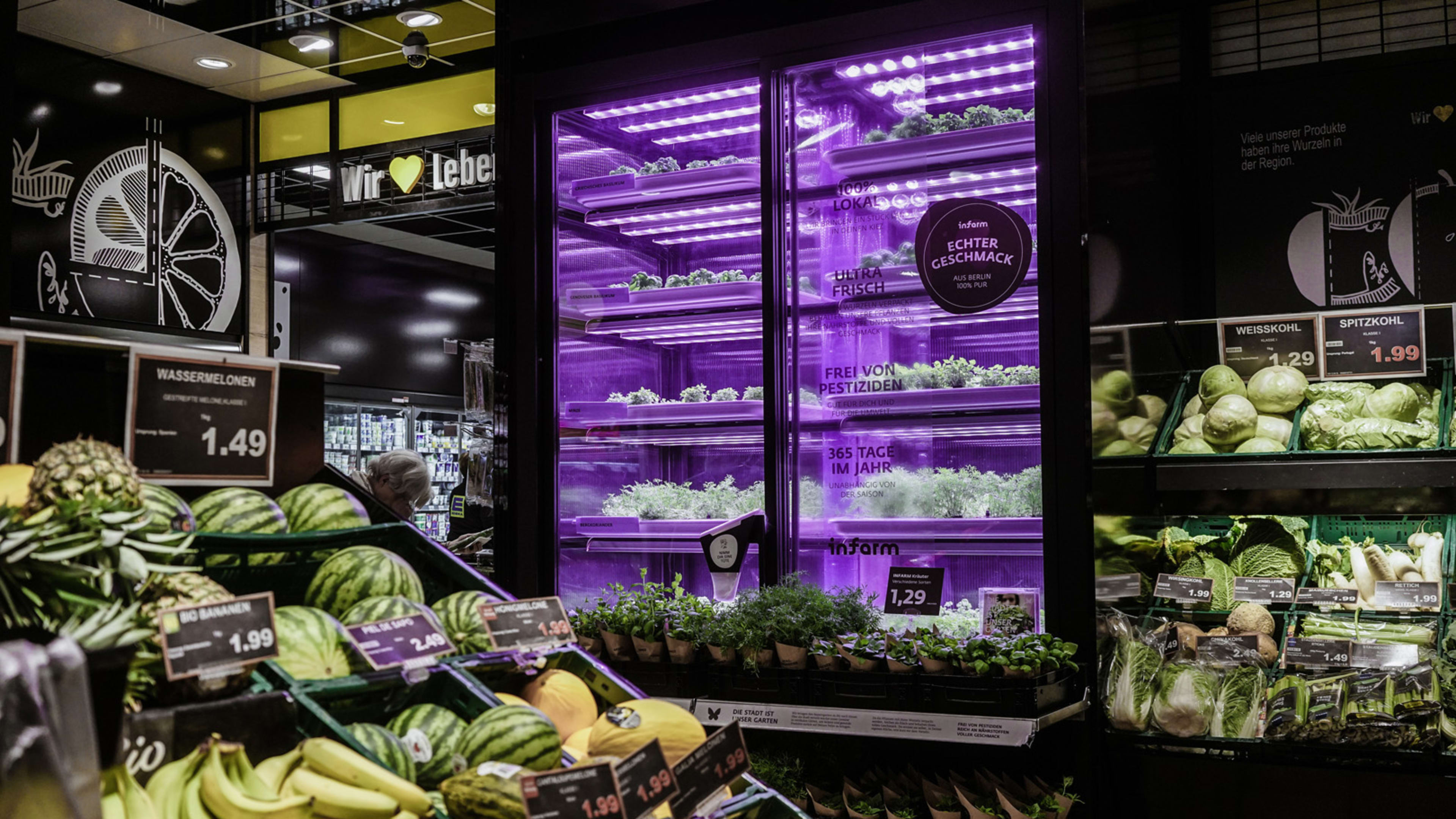At two Seattle-area locations of the supermarket chain QFC, some of their local produce isn’t growing at a farm nearby, or in a greenhouse on the roof. It’s growing directly inside the produce section. The chain, owned by Kroger, is the first in the U.S. to launch modular indoor “farming units” with greens that customers buy fresh.

“For the bulk of the last century, food has been produced far from where it is consumed, generating a supply chain that is environmentally unsustainable,” says Osnat Michaeli, cofounder of Infarm, the German startup that makes the indoor farming units. The company, which already supplies its tech to some European supermarkets, envisions building a global network of “truly local produce” that tastes better, since it’s fresher, and that eliminates emissions from transportation. Like other indoor agriculture, the system also uses 95% less water than growing outside.


A single two-square-meter unit can grow 8,000 plants in a year, and the farms can be scaled larger for distribution centers and other clients. While retailers set the price for the greens—the selection includes kale, two varieties of lettuce, and various herbs—Infarm says that its aim is to sell high-quality produce affordably; the system can also eliminate some of the costs of growing traditionally, including the costs of food waste.
The company closed a $100 million series B round of funding earlier this year, and is expanding across Europe. In the U.S., it plans to launch growing hubs at 13 additional QFC stores in 2020.
Recognize your brand’s excellence by applying to this year’s Brands That Matter Awards before the early-rate deadline, May 3.
